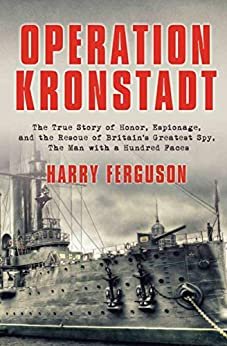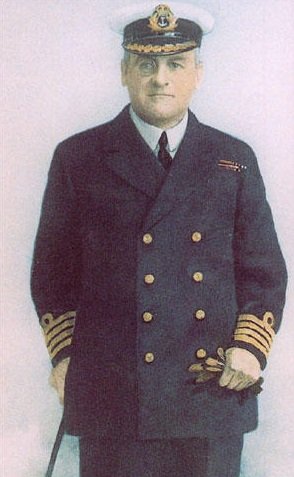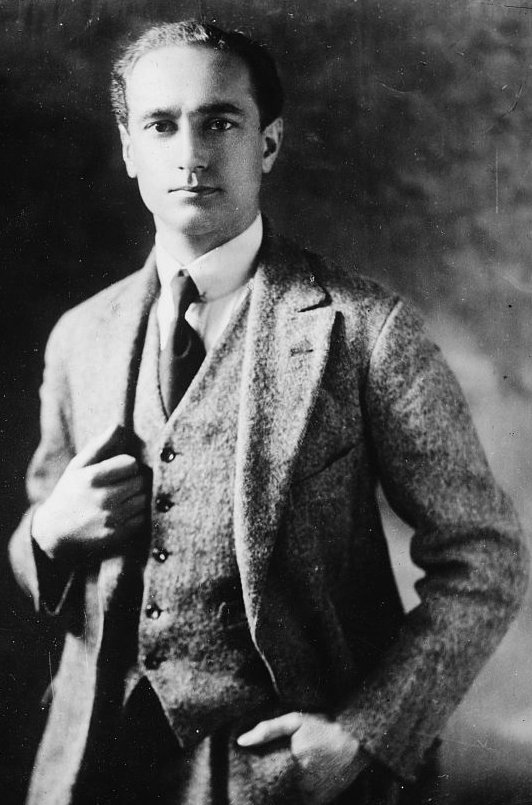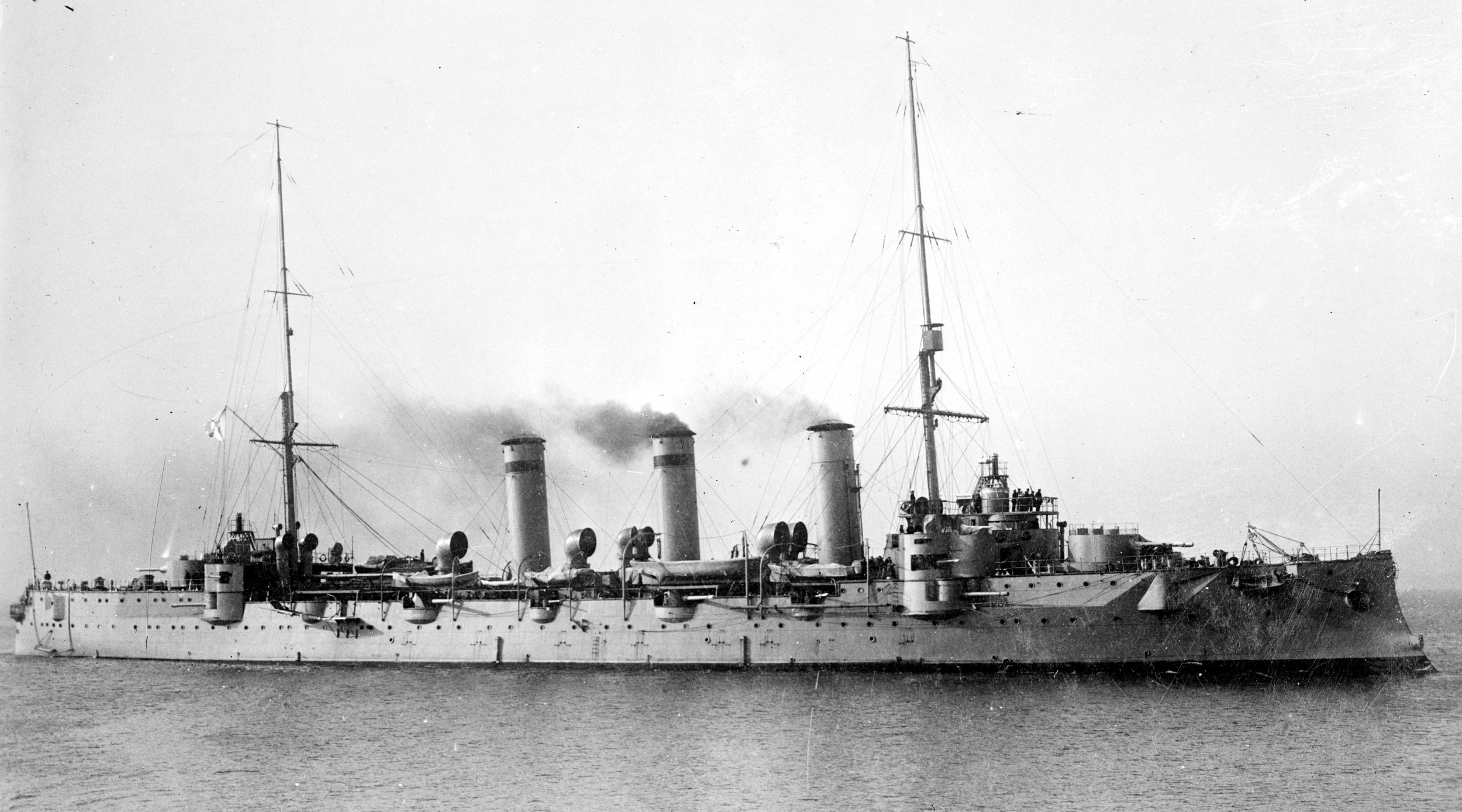Operation Kronstadt Book Review
Harry Ferguson’s Operation Kronstadt [Amazon link] filled in a gap in a time (1919-20) and a place (St. Petersburg) that I had known nearly nothing about. The book starts slow, and then builds and builds up to a genuinely thrilling climax. For events now more than a hundred years in the past, I found myself waiting with bated breath to see what would happen, even when I already knew what would happen. The narrative was so well done that I sometimes lost myself in the retelling.
It is also a damning indictment of the myth of omni-competence that Anglosphere intelligence agencies like to cloak themselves in. All real-world operations are a mess, but this one managed its successes only due to the grace of God.

Operation Kronstadt: The True Story of Honor, Espionage, and the Rescue of Britain's Greatest Spy, The Man with a Hundred Faces by Harry ferguson
I actually picked this one up because of its subtitle: The True Story of Honor, Espionage, and the Rescue of Britain's Greatest Spy, The Man with a Hundred Faces. This is for the simple reason that I am in love with Spy x Family. The protagonist of that manga is known as the man with a thousand faces, so I was curious whether there might have been some inspiration taken from Paul Dukes.

As best I can tell, the answer is no, but I’m not at all sorry I picked this book up. I hadn’t known much about the Russian Civil War. I still don’t, but now I at least have some foundation on which to build a comprehensible understanding from.
At the time the book begins, the Russian civil war was raging, and St. Petersburg was a city on the brink of starvation. During the Red Terror, all of the spies that the British had in St. Petersburg had been either killed or driven underground. In order to remedy this, the British Secret Intelligence Service dispatched Paul Dukes.
Dukes had previously lived in St. Petersburg, which gave him personal knowledge that would prove immensely useful. Which is good, because he received very little training after his recruitment into the Secret Intelligence Service. The real efforts of the SIS were directed elsewhere.
“As to the means whereby you gain access to the country, under what cover you will live there, and how you will send out reports, we shall leave it to you, being best informed as to conditions, to make suggestions.” —Paul Dukes, Red Dusk on the Morrow
The SIS was not viewed as favorably as the intelligence agencies associated with the military. Before the Great War, intelligence gathering was something military officers did on holiday, taking pictures or making sketches of fortifications and the like. It was viewed as a gentlemanly activity, and punishments for those caught were often light. Captain Mansfield-Smith Cumming and the SIS he led were meant for an entirely different endeavor.

Captain Mansfield-Smith Cumming
The SIS was intended to be the mechanism by which people who sold secret information could be put to use, but that required dealing with an entirely different class of people than other military officers. Accordingly, the SIS cultivated relationships with a number of unsavory people and organizations.
Paul Dukes was able to use the network of criminals, scofflaws, and traitors the SIS did business with to sneak into and out of Bolshevik Petrograd, and even to spirit away a number of emigres, exiles, and other people useful to Great Britain. However, the precedent this set placed the SIS, which later became MI6, on a dangerous course.
Unlike the honorable spying practiced by Lord Baden Powell and other gentlemen officers, everything the SIS did was at least in principle deniable, and depended entirely on the existence of people who would betray their country for money (or for the other three letters in the acronym MICE). Like the American equivalent of MI6, the CIA, this has tended to push the organization to avoid oversight, be internally self-sufficient, and actively participate in international criminal networks needed to clandestinely move money, people, and things.
However, all that lay in the future. Before and after the Great War, anyone who took a hard look at what Cumming and the SIS did was not impressed. Cumming seems to have been one of those people who was a master of building up his own reputation, rather than a savant of espionage. The Great War had provided a great opportunity for Cumming, and he built up a vast staff despite his poor performance.
After the end of the Great War, the Secret Intelligence Service found itself in danger of being eliminated in favor of one of the many other intelligence services in the British Empire. Duke’s mission, while ostensibly useful in its own right, was part of the bureaucratic in-fighting waged by Cumming. Since there were no agents left in Russia, if Cumming could get a man on the inside he would have something to demonstrate the usefulness of his organization.

British author and MI6 officer Sir Paul Dukes KBE (1889-1967)
By George Grantham Bain Collection (Library of Congress) - This image is available from the United States Library of Congress's Prints and Photographs divisionunder the digital ID ggbain.35198.This tag does not indicate the copyright status of the attached work. A normal copyright tag is still required. See Commons:Licensing for more information., Public Domain, https://commons.wikimedia.org/w/index.php?curid=6025060
You can get an idea of the competence and priorities of the SIS from the utter lack of operational security or compartmentalization on this mission. While transiting Finland before entering Bolshevik-controlled Petrograd, Dukes met with several exiles he had known from his time in St. Petersburg, including a man with known Bolshevik sympathies who lived with a mistress suspected of being a Bolshevik agent!
Fortunately for Dukes, the suspicions were unfounded, and he was able to move into Russia. But what success he did have was due to luck and his own resourcefulness. Operational support was spotty, at best. Dukes’ supply of money from SIS could not be relied upon, even though paying for intelligence was the entire mission.
This pattern would be repeated when Cumming recruited Lt. Gus Agar to serve as courier to and hopefully Dukes’ last-ditch escape from St. Petersburg using the Royal Navy’s Coastal Motor Boats. Agar’s mission quickly became common knowledge amongst the sailors in the British Baltic Fleet, which Agar relied upon for operational assistance.
Agar was also consistently undermined by his theoretical SIS superiors in theatre, Vice-Consul Raleigh Le May and Harold Hall, who made plans without him, including details of operating the CMBs that were clearly both his responsibility and his expertise. Near the end, Le May and Hall sent a request through Cumming to the Admiral of the Baltic Fleet asking for Agar to be removed from this post for being too independent minded.

Russian Armored Cruiser Oleg
However, since Admiral Cowan had recommended Agar for the Victoria Cross for the sinking of the armored cruiser Oleg while he was ferrying men and messages in and out of Petrograd, that did not happen. Admiral Cowan was sufficiently impressed by Cowan and the CMBs that he authorized an attack on the military harbor at Kronstadt using the CMBs and carrier-launched fighter-bombers.
The technology of the CMBs, like the aeroplanes that assisted them, was so far out on the bleeding edge of technology of the time that it amazing the operation was a success. The CMBs in fact used aeroplane motors, and like the planes of the time the motors required constant attention and even then still broke down frequently. Yet, the operation was a success.
The raid on the harbor sank a submarine tender and at least damaged the battleships in the harbor, although accounts differ. At the very least the Bolshevik fleet remained bottled up in harbor afterward. Lt. Agar, however, would not be able to rescue Paul Dukes, who had to escape on foot through Estonia instead. Agar himself was nearly killed on the last trip, running aground on a breakwater in between the coastal forts that protected Petrograd. A providential fog provided enough cover for the damaged CMB to limp into Finnish water and be towed back to the British fleet.
Paul Dukes’ work was to be far less successful. Dukes was never able to build up a persistent network in Petrograd, nor convince either the British or the White Russian commanders to use his intelligence to capture Petrograd. Ferguson implies that that the White Russian loss in the civil war was a near thing, although he provides copious examples of self-defeating behavior by the various factions within the Whites that cast some doubt on that for me.
Despite that, Cumming’s ploy seems to have worked, as the SIS survived the post-war budget contraction and went on to greater acts of stolen valor in the future, such as being the cover story for where the Ultra code decrypts came from during World War II. Dukes and Agar both managed to come out of this mission alive and lauded, although Cumming didn’t seem to have much to do with that.
Both Agar and Dukes wrote books about their missions, although Agar’s books are harder to find and thus more expensive. The value Operation Kronstadt offers over the first-person accounts of its principals is in bring the perspective of an intelligence agency insider to indict his own profession. Like many books of secondary history, the flow of events and information in the book has been manipulated to build up to the most exciting episode, the raid on Kronstadt harbor and Duke’s flight into Estonia. This hampers the book a bit, but you can always turn to Baltic Episode or Red Dawn on the Morrow for that.
Aside from the innate historical interest of the time and the place, I think this book should be read as an essential component of understanding how espionage in the Anglosphere got to where it is today. It is worth understanding more deeply the disconnect between performance and reputation that seems to persisted for a century.
With Both Hands Classics | My other book reviews | Reading Log



Comments ()